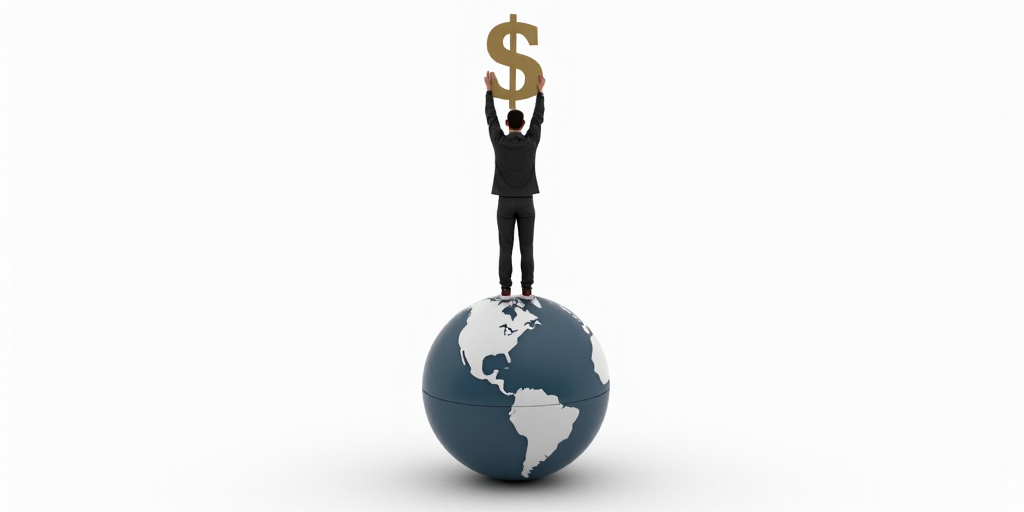Introduction
Since 2020, the world has faced a series of crises, yet the global economy has held up remarkably well. However, the margin for error is dwindling, especially with the global debt total now being nearly 25% higher than it was before the COVID-19 pandemic, which was already at a historic high.
The Global Debt Situation
This over-indebtedness could undermine the ability of all economies to protect themselves against the latest shock: higher trade tariffs. While debt is crucial for driving economic growth, it should be understood as a form of deferred taxation. Governments can make long-term investments that will benefit future taxpayers without burdening the current generation or support national growth and income during an economic emergency, rather than raising taxes which could deepen the recession.
However, there comes a time to pay the piper. If national income does not grow faster than the cost of credit, taxes will need to be raised to pay off the debt. Persistently high debt thus becomes a barrier to economic progress.
The Height of the Barrier
This barrier has rarely been as high. Over the past 15 years, developing countries have found themselves trapped in debt conditions, accumulating debt at a record pace: six percentage points of GDP annually on average. Such rapid debt accumulation often ends in tears, with a 50% probability of triggering a financial crisis.
This particular increase has been marked by the fastest rise in interest rates in four decades. The borrowing costs have doubled in half of the developing economies, and the net interest cost as a percentage of public revenue has risen from less than 9% in 2007 to nearly 20% in 2024. This alone constitutes a crisis.
The Vicious Cycle
Despite avoiding a systemic financial collapse like the one in 2008-09, many developing economies are now trapped in a vicious cycle. To service their debts, many are cutting back on crucial investments in education, healthcare, and infrastructure needed for future growth.
This is particularly true for the 78 poorest countries that can borrow from the International Development Association of the World Bank. These nations are home to a quarter of humanity, representing a significant portion of the 1.2 billion young people entering the global workforce in the next 10-15 years. Yet, policymakers worldwide have chosen to gamble on global growth acceleration and interest rate declines to defuse the debt bomb.
The Need for Global System Modernization
The world cannot afford another decade of drifting and denial regarding debt. With current policies, global growth is unlikely to accelerate soon, meaning sovereign debt-to-GDP ratios will likely rise in the remainder of this decade.
Today’s trade wars and unprecedented political uncertainty have only worsened the outlook. Early in 2025, economists’ consensus forecast predicted global growth of 2.6% for this year. This figure has now dropped to 2.2%, nearly a third less than the average of the 2010s.
Interest rates are also unlikely to fall. In advanced economies, central bank-set interest rates are expected to average 3.4% this year and next, more than five times the annual average between 2010 and 2019. This will exacerbate the difficulties for developing economies. In times of scarce public resources, total private capital mobilization will be necessary to drive growth and development over the next five years.
However, foreign private capital is unlikely to flow into heavily indebted economies with few growth prospects. Investors will correctly assume that any growth-derived gains will simply be taxed to pay off the debt. Therefore, debt reduction should be the top priority for developing economies with persistently high debt-to-GDP ratios.
Moreover, a clear vision of the broader problem is urgently needed: it’s crucial to modernize the global system to assess a country’s debt sustainability. The current system hastily decides that countries only need loans to get by, while most low-income countries are insolvent and will require debt relief. Governments must also stop the habit of borrowing from domestic creditors; rising domestic debt is stifling private sector national initiative.
Prioritizing Growth
After debt reduction, the next priority is to accelerate growth. It’s absurd to expect growth to magically return. Policies hindering trade and investment, like tariffs and non-tariff barriers, should be dismantled as soon as possible. For many developing economies, equitably reducing tariffs for all trade partners could be the quickest way to restore growth. Developing economies also stand to gain by fostering a more investment-friendly regulatory environment.
These achievements can then be used to refocus national attention on development, particularly by increasing investments in health, education, and infrastructure.
Setting New Debt Norms
As the adage goes, when you’re in a hole, stop digging. A period of extraordinarily low interest rates encouraged many countries to overspend beyond their means. In the past five years, a series of disasters—both natural and human-induced—prevented them from doing otherwise. But now, prudence is essential. Governments should return to previous norms on what constitutes excessive sovereign debt. Let’s say it’s the maximum of 40-60: 40% of GDP for low-income economies, 60% for high-income ones, and others fall into an intermediate range.
About the Author
Indermit Gill is the Chief Economist and Senior Vice President of Development Economics at the World Bank.






